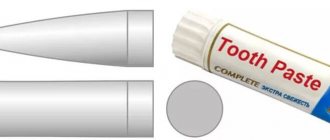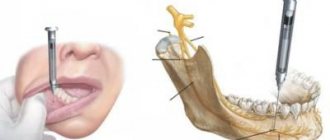Local anesthesia is used to numb sensations in a specific part of the body. This prevents pain during surgical procedures.
An anesthetic is applied to the part of the body that is undergoing surgery.
Can be used for sedation, which calms the patient and reduces stress levels. Together, they allow the surgeon to perform the procedure without pain or distress.
Local anesthesia does not last long, so it is mainly used for small outpatient procedures where the patient can leave the clinic the same day.
What is local anesthesia
The main distinguishing feature of local anesthesia is that the person remains conscious during its effect. This type of anesthesia acts on receptors that are located below chest level. In addition to complete anesthesia, local anesthesia eliminates other tactile sensations, including temperature, pressure on tissue, or stretching.
Local anesthesia is possible in the following areas:
- on the surface of the mucous membranes of various organs - trachea, larynx, bladder, bronchi, and so on;
- in the thickness of tissue - bone, muscle or soft;
- in the direction of the nerve root extending beyond the boundaries of the spinal cord membrane.
- in impulse-conducting nerve cells of the spinal cord.
The main goal of local anesthesia is to block the occurrence of impulses and their transmission while maintaining consciousness.
Advantages and disadvantages of application infiltration anesthesia
As already mentioned, this type of pain relief is safe for the patient’s body due to the low concentration of active substances. Its other advantages are:
- Providing immediate effect;
- Rapid removal of substances from the body;
- Simplicity of the procedure technique;
- Minimal tissue trauma;
- Prolonged effect;
- Anesthetizing a group of nerves.
As for the disadvantages, they are as follows:
- Insufficiently good effect or its almost complete absence in diseases of the oral cavity of a purulent and inflammatory nature;
- The patient feels an unpleasant bitter taste of the solution after its administration;
- Insufficiently good effect on areas of dense bone formations;
- No effect for tissues that are deep.
Types of local anesthesia
In medicine, there are the following types of anesthesia, differing in some characteristics and scope of application:
- terminal;
- infiltration;
- regional;
- intravascular.
Each type has a list of indications and contraindications that must be taken into account when conducting them.
Terminal anesthesia
This type is also known as topical or surface anesthesia. The main areas of application are dentistry, gastroenterology and proctology. Terminal local anesthesia (anesthesia) differs from other types in the method of administration: anesthetics in the form of a spray, gel or ointment are applied to the surface of the skin or mucous membranes.
In proctology, local anesthetic gels and sprays (Katetdzhel, Lidochlor, Lidocaine, etc.) are used during proctological examinations and diagnostic procedures: rectal examination, anoscopy, sigmoidoscopy. The examination becomes virtually painless. Also, local anesthesia in proctologists is used during certain medical procedures: latex ligation of hemorrhoids, sclerotherapy of hemorrhoids, infrared coagulation of internal hemorrhoids, as well as biopsy from the rectum.
Infiltration anesthesia
It is used in dentistry and surgery, and involves the introduction of special solutions into soft tissues. The result of the procedure, in addition to a pronounced anesthetic effect, is an increase in pressure in the tissues, and, as a result, a narrowing of the blood vessels in them.
Regional anesthesia
This type involves the introduction of an anesthetic near large nerve fibers and their plexuses, resulting in pain relief in localized areas. It is divided into the following types of local anesthesia:
- conduction, with the introduction of drugs near the trunk of a peripheral nerve or nerve plexus;
- spinal, with the introduction of drugs into the space between the membranes of the spinal cord and “turns off” pain receptors over a large area of the body;
- epidural anesthesia, with the introduction of drugs into the space between the spinal cord and the walls of the spinal canal through a special catheter.
Intravascular anesthesia
It is used mainly for surgical interventions on the extremities. Administration of drugs is possible only with the application of a hemostatic tourniquet. The anesthetic is injected into a blood vessel located near the nerve responsible for the sensitivity of the limb in the area below the injection site.
In recent years, due to the emergence of more effective local anesthetics, the number of proctological operations performed using local anesthetics has increased significantly. In addition, our specialists have developed a method of combined anesthesia - a combination of local anesthesia and intravenous anesthesia. This significantly reduces the toxicity of general anesthesia and reduces the severity of pain in the postoperative period, which allows the patient to recover faster after surgery.
Most often, when performing proctological operations (hemorrhoidectomy, excision of anal fissures, small pararectal fistulas, rectal polyps), pararectal blockade, as well as spinal anesthesia, are used.
Application dental anesthesia: advantages and disadvantages
Dentists consider the main advantage of this type of anesthesia to be its rapid action. In addition, they highlight a number of others, such as:
- Elimination of any discomfort for the patient during dental procedures;
- High level of safety for the patient’s body due to the exclusion of the penetration of substances used into the bloodstream;
- Painlessness of the anesthesia procedure itself;
- Possibility of using the latest generation of drugs even for children;
- Sufficient duration of pain relief to perform simple dental procedures.
As for the disadvantages, they are the following:
- Difficulty in calculating and maintaining dosage;
- Lack of deep action and, as a result, limitations in use;
- Vasodilator effect and increased risk of bleeding;
- Exceeding the dose may result in the anesthetic entering the bloodstream and causing an allergic reaction.
Preparations for local anesthesia
The following drugs are used to provide local anesthesia:
- Novocaine;
- Dicaine;
- Lidocaine;
- Trimecaine;
- Bupivacaine;
- Naropin;
- Ultracaine.
Each of them is effective when carrying out a certain type of anesthesia. Thus, Novocaine Dicaine and Lidocaine are more often used when it is necessary to anesthetize the skin and mucous membranes, while more powerful drugs, such as Naropin and Bupivacaine, are used for spinal and epidural anesthesia.
Principles of anesthesia in ophthalmology
Anesthesia in ophthalmology is used not only for pain relief; along with this, it solves several other problems and performs certain functions. Among them:
- Complete immobilization of the eyeball.
- Ensuring stable normal intraocular pressure.
- Blocking the flow of moisture to the eye through the tear ducts.
When choosing a method of pain relief in ophthalmology, the age of the patients must be taken into account. As a rule, these are elderly and elderly people who, in addition to eye diseases, also have some systemic diseases that require certain conditions.
Indications for local anesthesia
All methods of local anesthesia have the same list of indications, and are used if necessary to numb a specific area for a short time (up to an hour and a half). It is recommended to use them:
- for performing surgical non-abdominal interventions or small abdominal operations, the duration of which does not exceed 60-90 minutes;
- with intolerance to general anesthesia;
- if the patient is in a weakened state;
- if it is necessary to carry out diagnostic procedures against the background of severe pain;
- if the patient refuses general anesthesia;
- in elderly patients;
- when general anesthesia cannot be used.
Benefit
Local anesthesia provides pain relief for dental surgery and other outpatient procedures.
Local anesthesia is used when:
- the operation is minor and does not require general or regional anesthesia
- the procedure can be performed quickly and the patient does not have to stay overnight
- the operation does not require muscle relaxation or loss of consciousness of the patient
Examples include dental surgery, removal of warts, moles or cataracts, and biopsy.
Possible complications when using local anesthesia
The use of local anesthetics carries certain risks, which include several types of complications:
- damage to the central nervous system and conduction system of the heart;
- damage to spinal tissue, nerve roots and spinal cord membranes;
- suppuration at the site of anesthetic injection;
- allergic reactions.
In most cases, the listed problems arise when the anesthesia technique is violated, or when the anamnesis is not collected completely.
Other applications
Local anesthesia may also be used to diagnose some chronic conditions and to relieve pain after surgery.
Research has shown that local anesthesia may be more useful than opioids such as morphine for treating pain after total knee replacement surgery.
In 2010, results from a rodent study in Turkey showed that local anesthetics may reduce some symptoms of inflammatory bowel disease (IBD).
Anyone administering any type of anesthetic should be appropriately trained and qualified.
Deep sedation with Propofol - drug-induced sleep
During dental treatment, anesthesia for children or deep sedation may be used. These concepts are often confused, since in both cases the child is immersed in medicated sleep. But the difference is significant:
- General anesthesia in dentistry is given to children through a mask. Artificial sleep is as deep as possible, with complete loss of sensitivity.
- Sedation with Propofol involves intravenous administration of the drug and requires additional pain relief.
Propofol guarantees:
- natural physiological state of sleep;
- falling asleep in 1-2 minutes;
- exceptionally high safety for the child;
- simple awakening and rested state;
- extremely low risk of allergic reactions and side effects.
The quality and depth of sleep is controlled by an anesthesiologist. At this time, dentists treat and save teeth, remove completely destroyed units, and install prosthetic structures.
Examples of work “Before” and “After”
Complex one-stage implantation of the lower jaw
Case: there was a loose bridge of 4 front teeth on the lower jaw; after diagnosis, removal of the remaining teeth and complex basal implantation were prescribed.
Restoration of all teeth using basal implantation method (March 2012)
Case: partial adentia, exposed roots of natural teeth, periodontitis, increased tooth mobility, severe atrophy of bone tissue in some places beyond the possible norms for classical dental implantation.
Simultaneous implantation and removable prosthetics (June 2012)
Case: complete absence of teeth in the upper jaw; at the time of treatment, an old removable denture was used and was to be replaced.
Classical implantation and dental prosthetics (October 2012)
Case: need for implantation of a primary canine.
Why is anesthesia required for surgery?
- creating optimal conditions for the surgeon’s work during surgery, which determines the level of quality of surgical treatment
- providing safe, effective pain relief to patients during surgery
- ensuring and maintaining the life of the patient before, during and after surgery
- protecting the patient from aggressive environmental factors acting on his body (biological, infectious, physical, chemical, etc.)
- Are there any restrictions for anesthesia?
- Today, there are no restrictions for anesthesia based on age or the patient’s somatic pathology. But there are only indications and contraindications for performing one or another anesthesia technique. The choice of anesthesia technique is made by an anesthesiologist-resuscitator.
What is meant by the term “Anesthetic care”?
Anesthetic care for patients includes:
- assessment of the condition of patients before surgery, determination of anesthetic and surgical risks
- determining the feasibility and carrying out, if necessary, intensive therapy in order to prepare the patient for surgery
- prescribing premedication (drug preparation for anesthesia)
- selection of anesthesia method and necessary funds
- anesthesiological support for planned and emergency operations, dressings and complex diagnostic studies
- monitoring the condition of patients during anesthesia and conducting corrective therapy in order to prevent and eliminate life-threatening functional and metabolic disorders
- awakening patients after general anesthesia, if there are no indications for prolonged maintenance of drug-induced sleep
- elimination of pain caused by various causes (including incurable diseases) using special methods
How does an appointment with an anesthesiologist-resuscitator take place and why is it needed?
- The anesthesiologist examines the patient before the operation, and not only pays attention to the main disease for which the operation is to be performed, but also clarifies in detail the presence of concomitant diseases
- If the patient is operated on as planned, then, if necessary, treatment of concomitant diseases and sanitation of the oral cavity are carried out
- The doctor finds out the allergy history (whether all drugs and substances are tolerated by the patient)
- Clarifies whether the patient has undergone operations and anesthesia in the past
- Pays attention to the shape of the face, chest, neck structure, and the severity of subcutaneous fat tissue
- Such a detailed consultation is necessary in order to choose the right method of pain relief for each individual patient.











